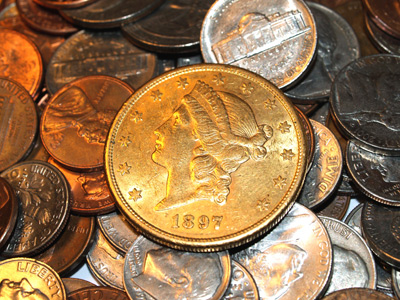
Metals - Alloys
This is the first of our GCSE Chemistry quizzes on the topic of metals. In it we will find out about some of the properties and uses of alloys, the metals formed by mixing two or more (usually metallic) elements.
Although they have some incredible properties, metals on their own aren't always suitable materials for us to use. Most of the metals we use in our everyday lives are alloys. Pure copper, gold, iron and aluminium are too soft for many jobs so what can we do to improve their properties? Well, we can mix them with other elements to form alloys. Alloys are normally (but not always) a mixture of two or more metallic elements. A good example of this is the mixing of carbon with iron to make a range of steels. Iron from the blast furnace is a brittle material but when mixed with the right amount of carbon it becomes extremely malleable and ductile. It can be hammered and bent into shape or drawn out into thin wires.
Ready for more?
not all...
quizzers. Try to win a coveted spot on our Hall of Fame Page.







